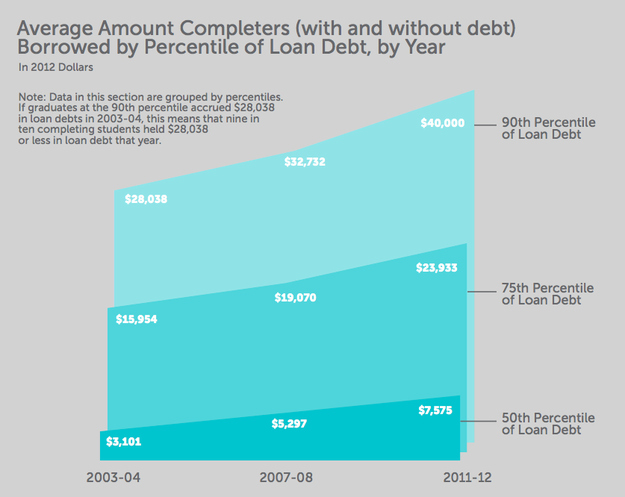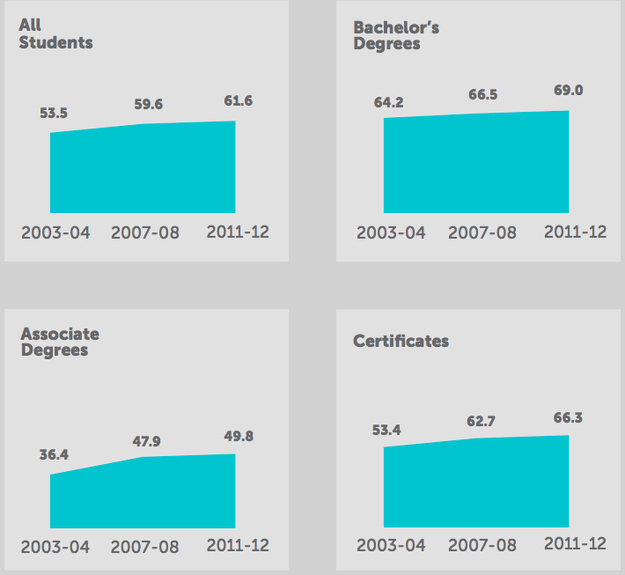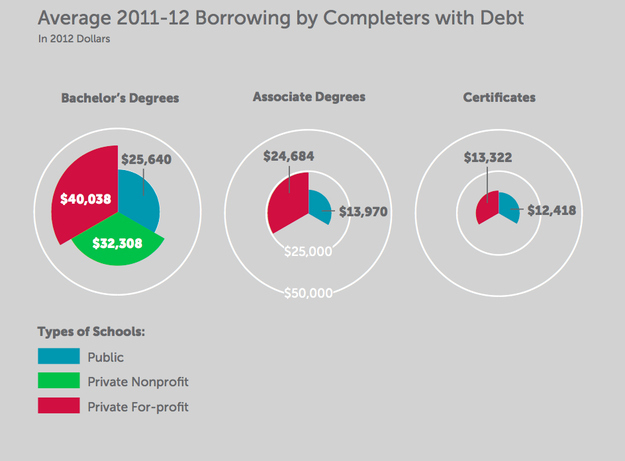
The total student debt in the United States recently passed the $1 trillion mark, so it’s little surprise that it has become one of the chief financial and even political issues for young people. A recent survey found that 79% of 18- to 29-year-olds considered student debt to be a “major or minor problem” and that the concern was consistent across party lines.
A new study authored by New America Foundation senior analyst Ben Miller shows that the average debt load for graduating students has been growing — and quickly. Using data collected from the Department of Education, Miller found a “predictably dire picture” for students who graduated in 2012, the last year that the DOE’s study covered. Here are some of the most important details:
1.There are 800,000 more indebted college graduates than there were eight years ago.
As the number of college graduates has increased, so has the number who are graduating carrying at least some debt. Miller estimates that there were 800,000 more indebted college graduates in 2011–2012 than there were in 2003–2004. The number, he estimates, went from 1.6 million to 2.4 million.
2.The average tab for an indebted college graduate is $29,400. The average annual income for a working adult between 25 and 34 is $37,524.
That figure is the highest ever. And it has increased 20% over four years. Nearly 70% of bachelor’s degree recipients in 2012 had some student debt, also the highest ever.
3.More college students are borrowing, no matter what type of degree they’re getting.
For all types of undergraduate degrees — bachelor’s, associate, and certificates — the percentage of degree recipients borrowing has gone up over the last four and eight years. The biggest jump has been in associate degrees, from only 36.4% of graduates borrowing in 2004 to almost half in 2012.
4.Students who complete degrees at for-profit colleges are way more likely to graduate with more debt than their public school counterparts.
“There is still significant variation depending on the type of school a graduate attended,” Miller writes. The biggest difference is between students going to public institutions and for-profit private ones: “42 percent of students earning an associate degree at a… public college borrow. This is less than half the rate of students seeking similar degrees at private for-profit colleges, where nearly nine in ten students graduate with debt.”
While the average amount of debt is going up for borrowers regardless of what type of college they attend, the average debt for students who get a degree at private or for-profit institutions is growing faster.
5.The most indebted students are more indebted than ever.
While the median borrower’s debt has more than doubled from eight years ago, borrowers in the 90th percentile — those who borrowed more than 90% of graduates that year — have had a $12,000 increase in total debt.
These disparities are even more pronounced among graduates of different types of schools: the 75th percentile debt level for associate degree recipients at public colleges is $8,500. Meanwhile, at for-profit institutions, the median debt level is $20,000. The median debt level for those who have completed associate degree at public schools is $0.
3 WAYS TO SHOW YOUR SUPPORT
- Log in to post comments















